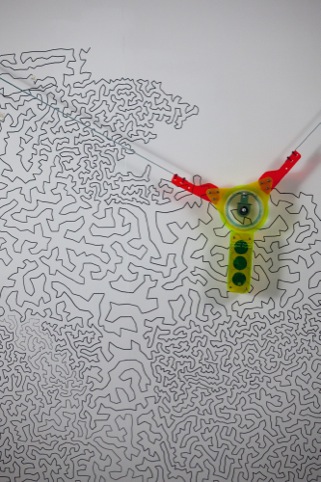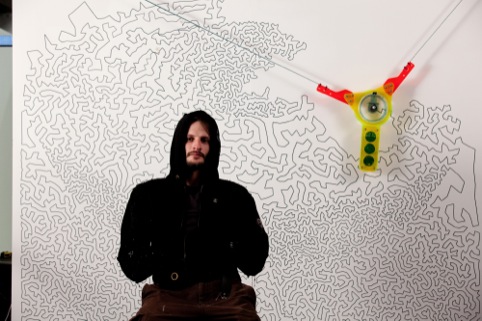Artistic robots solve the Travelling Salesman’s Problem
While robots are traditionally viewed as the preserve of the scientific, the futuristic or the geeky, the field of psychology is now welcoming them into its analytical bosom.

Over the course of 2012, we’ve seen lovely yet ultimately rather useless very expensive robots made of jellyand slightly less expensive robots made of card ; and now, thanks to academics at the University of Sheffield, we’re seeing them create a mural as they enact the psychological marvel of the ‘Travelling Salesman’s Problem’.
The Travelling Salesman’s Problem describes trying to find the shortest route possible to a given destination. Nature’s top solvers of said problem are bees, who always manage to take the shortest route from flower to flower in their pursuit of nectar.

Based on these flight patterns, artist Mattias Jones and psychologist Dr. Tom Stafford have teamed up with computer coder and Berlin-based record producer Tom Whiston to create a mathematical formula that will allow two robots to behave in the same way for the Mind Out project.
This algorithm has now been harnessed to allow the robots to paint a giant mural of the Sheffield landscape in less than a week. Two humans performing the same task would take at least a month.

The piece is now almost at completion, after which members of the public will be invited to gleefully destroy it – all because, due to the clever algorithm, it can very easily be recreated.

Jones says, ‘I love looking at the patterns in nature and seeing what I can make from them. This project is going to look incredibly impressive and it’s fantastic to be able to demonstrate what mankind can achieve by learning from what’s already around us and applying it to maths and science.’
-
Post a comment




